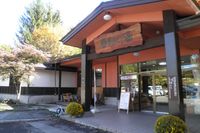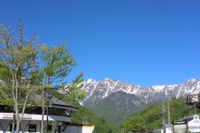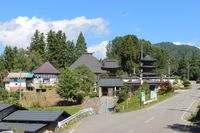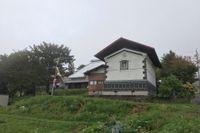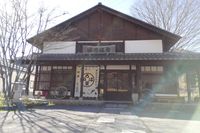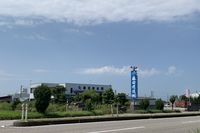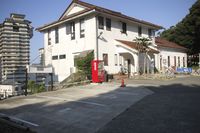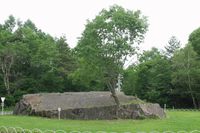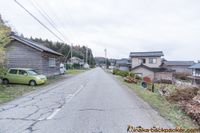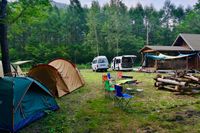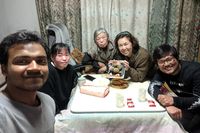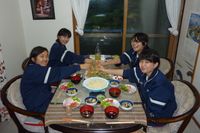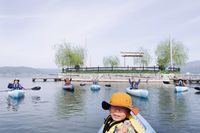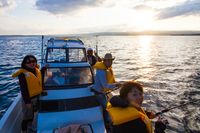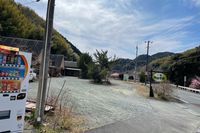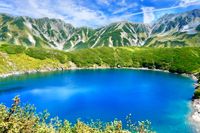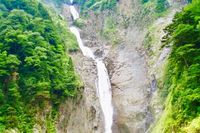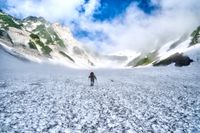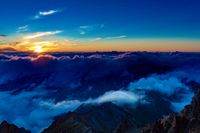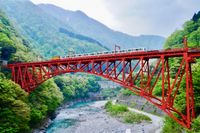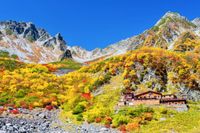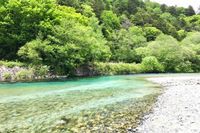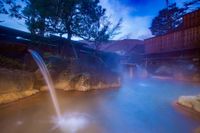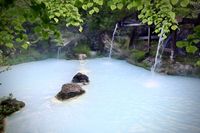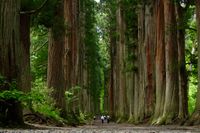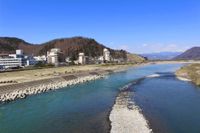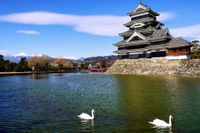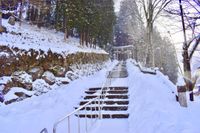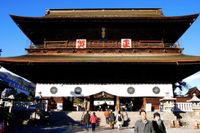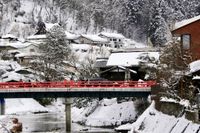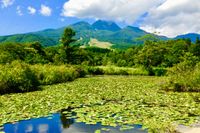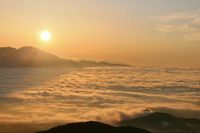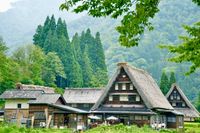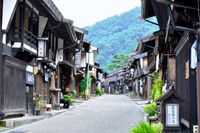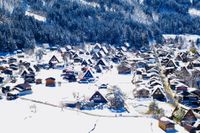Yuki no Otani
富山県/中新川郡立山町

Description
This is an Alpine route of the Tateyama Kurobe mountain range. As snow has to be cleared aside in the heavy mountain zone of Toyama in around March, visitors can see the spectacular snow walls in April and May, with a height of 15-20m.
Homepage
Address
Nearby Car Night Spots
Omachi Hot Spring "Yukemuri Estate: Yakushi no Yu"
¥500〜
/ per nightNagano Ken Taira, Omachi Shi
4.1
(27)Backcountry Backpacker's House <2>
¥5,000〜
/ per nightIshikawa Hosu-gun, Iwaguruma Anamizu-machi
5.0
(4)A luxurious Niigami Pass camping car spot where you can occupy a 500 tsubo lot by yourself
¥150,000〜
/ per night群馬県 吾妻郡長野原町北軽井沢
5.0
(2)Nearby Activities
【Only foreigners】 Experience local life in Nagano
¥5,000〜
/ per personNagano Takehusa, Shinshu-shinmachi, Nagano city,
3.0
(0)【Only Foriegn Visitors】 International exchange with handmade udon!
¥5,000〜
/ per personNagano Prefecture Shinonoi Utabi, Nagano City
3.0
(0)【Only Foreign Visitors】International Exchange with Takoyaki and Okonomiyaki
¥5,000〜
/ per personNagano Prefecture Wakasato, Nagano City
3.0
(0)【Only Foreign Visitors】Original Miso Ramen Party
¥5,000〜
/ per personNagano Prefecture Minowa, Nagano City
3.0
(0)【Only Foreign Visitors】Local Meetup in Nagano City
¥5,000〜
/ per personNagano Prefecture Hirabayashi, Nagano City
3.0
(0)【Only Foreign Visitors】Takoyaki Party with Locals
¥5,000〜
/ per personNagano Prefecture Wakaho Kawada, Nagano City
3.0
(0)Country lifestyle experience by country backpacker
¥19,000〜
/ per personIshikawa Iwaguruma, Anamizu-machi Hosu-gun
5.0
(6)Ranking Stations
Vanlife BASE | 45 min. from Narita Airport / Perfect for campervan travel/A seaside town rich in nature/Japanese countryside town/welcome traveler
¥7,000〜
/ per nightChiba Koseki, Kujukuri-machi, Sambu-gun
5.0
(63)Shin Meishin Suzuka PA (inbound) RV Station Suzuka * With Power!
¥2,200〜
/ per nightMie Yamamotocho, Suzuka-shi
4.3
(157)(Bonfire BBQ) Chita Mihama Noma Beach Station
¥3,500〜
/ per nightAichi Noma, Mihamacho, Chita County
4.7
(42)Nearby Drive Spots
Mikurigaike Pond
This is a crater lake at altitude 2,405 meters formed by the volcanic activity of Tateyama volcano, in Murodo-daira. In Tateyama faith, the name has the meaning of "God's kitchen" and the pond's water ownership was bequeathed to Tateyama. For those practicing religion in this area, it became known as holy water.
Shomyo Falls
This is Japan's tallest waterfall at 350m, in the Tateyama mountain range. The name comes from the fact that a Priest named Hounen heard the voice that called "Shomyo Nenbutsu " from the sound of the waterfall.
Hakuba Daisekkei
This is one of Japan's three large snowy mountains with a length of 3.5km and altitude of 600 meters, situated in Hakuba village. The valley is formed from the peaks of Hakuba and Suko, and as there is a walking route of about one hour from Sarukura to the snowy mountain area, it is an ideal hiking course.
Mount Yarigatake
Located at the southern part of the Hida mountain range, this is Japan's 5th tallest mountain at 3,180 meters. As the name suggests, the mountain has an unusual shape resembling a spear that is being cast to heaven. This has earned it the nickname of "Japan's matterhorn". The sunrise and sunset views with the sea of clouds below captures the hearts of many climbers.
Unazuki Onsen
This is a secret onsen in Kurobe Valley, that is part of the local valley river and was visited by Emperor Showa as well as Yosano Akiko. The area is also a popular tourist spot to see the Kurobe Gorge railroad and view the spectacular landscape. The area is particularly popular in summer for the greenery and in autumn for the autumn leaf viewing.
Karasawa Curl
This is the largest glacier valley in Japan at the southern part of the Hida mountain range. There is a stunning view between Mount Okuhogatake and Mount Maehogatake due to their height difference of about 1,000 meters. The area has become popular for autumn leaf viewing in recent years, and the trees, known for their "three stage" autumn leaves offer an interesting contrast to the surrounding rocky area.
Kamikochi
This is a scenic spot with an altitude of 1500 m in the southern part of the Hida Mountain Range. It has many sightseeing spots such as Azusa RiverKappa BridgeMyojin PondTakesawa WetlandsTashiro Pond. As there are only a few such plains spread out in Japan to this extent, many tourists flock to this area to see the rare scenery. The area is also the habitat of the Japanese monkey, Char Fish, and Genji firefly.
Oku Hida Onsen
This is a hot spring deep in Oku Hida. It is situated in the northern alps, and was admired by Shingen Takeda during the Sengoku era(1467-1600), as an onsen with the third most plentiful amount of spring water. The onsen is unique in that there is a free communal bath area with many different types of baths.
Shirahone Onsen
This is a hidden away hot spring in the vicinity of Kamikochi in the west part of Nagano prefecture. It has always been well known as a place of healing, and it is said that one will not catch a cold if one enters the milky white water for three days. It is a secluded hot spring town with a quiet atmosphere, with several inns and places to eat around the local area.
Togakushi Shrine
This is a shrine built in 210 BC. The shrine's God is known as Amenodajikarao no Mikoto and was built by the 5 enterprises known as Rear shrineMiddle ShrineHokoshaNine Headed Dragon ShrineHinomiko Shrine at the foot of Holly Togakushi Mountain. The area was often used as a place to practice the Shugendo (a religion which was a fusion of several different religions) and was also known as the "three mountains of the Sanzenbou area" as the third mountain along with Mount Hiei and Mount Takao. Although it has been the scene of numerous battles along with Zenkoji Temple, it came under the fierce protection of Tokugawa Ieyasu and is still strictly protected today.
Togurakami Yamada Onsen
This is an Onsen located on the river bed of Chikuma River. It opened during the Meiji era(1858-1912), and was known as a place of devotion towards the Zenkoji Temple, as well as a place of healing for wounded and sick soldiers during the war. A total of 150 geisha registered to this onsen, and also has the unique characteristic of being an onsen constructed on a base of a shooting range.
Matsumoto Castle
This is a castle build by Ogasawara clan in 1504. It is famous as one of Japan's only 12 castle towers and is one of 5 which has been designated as a national treasure by the Japanese government. The castle was taken into ownership by Ishikawa Kagumasa in 1590, and it is said that he painted the castle jet black to express loyalty to the castle lord, and became famously known as the "Crow castle".
Keta Wakamiya Shrine
This is a shrine whose construction date is unknown. It houses the God known as Okuninushi no MikotoMii no Kami. This place is also home to one of Japan's three Hadaka festivals (where a minimum amount of clothing, normally a loincloth) is worn, known as "Furukawa festival", which has been performed since the Edo era(1603-1868). The resonant sound of the drum rings out during the festival proceedings. There are many fans of the anime "Your name" who make the pilgrimage here in dedication to the anime piece.
Zenkoji Temple
This is a non-sectarian temple that was built in 644 AD. The temple was built to revere the oldest Buddha known as Ikko Sanzon Amida Nyorai, and numerous priests and monks visited this temple, including Shinran and Ippen. It was the scene of the battle between the warriors Takeda Shingen and Uesugi Kenshin, but its restoration was ordered by Tokugawa Ieyasu, and is known even today as a famous place where all should visit at least once in their lifetime.
Hida Takayama Onsen
This is an Onsen near Hida Takayama. It is a new onsen that is established in an historic castle town with traditional style buildings and the Takayama Festivals. The alps become completely awash with white snow during the winter, so taking a warm bath is ideal to warm the body whilst looking out at the snowy landscape.
Lake Imori
This is a pond within Myokokogen pond with a length of around 500m. The name originates from the fact that newts(Imori) used to live here in great number. On a clear date, the 2,454m high Mount Myoko is reflected clearly in the pond water.
Utsukushigahara Highlands
This is a plateau situated in central Nagano, with an altitude of 2,000 meters. Beyond the Venus line highway renowned for its views, this hidden area awaits. Here visitors can see a 360 degree panoramic view of the northern and southern alps, Sengen mountain, and Mount Fuji. The area is an ideal photo spot for its otherworldly starscapes above and cloud scapes below.
Gokayama Gassho no Sato
This is a famous settlement in the southern part of Toyama prefecture, and listed as a World Heritage Site. It is known for particularly heavy snow fall, and the buildings have particularly steep sloped roofing to adapt to this climate. The area is also particularly unique for its frequent traditional folk dances that take place here.
Narai-Juku
This is the 34th town inn which is located on the Nakasendo road, which links Tokyo (Edo at the time) and Kyoto, built during the Sengoku era(1467-1600). Situated just past the Torii gate in a perilous spot, the inn town became known as the "Narai of 1000 hotels" by many travelers. During the Edo period(1603-1868), the woodwork industry became prolific in the area with wooden crafts and lacquering, and is popular as a souvenir spot today.
Shirakawa-go
This is a village situated in northern Gifu, and registered as a World Heritage Site. It is known as an area with one of the highest levels of snowfall, and due to this, the roofing of houses is set at a steep angle to deal with the snow fall. Some of these houses still exist nowadays, and are still in use.

